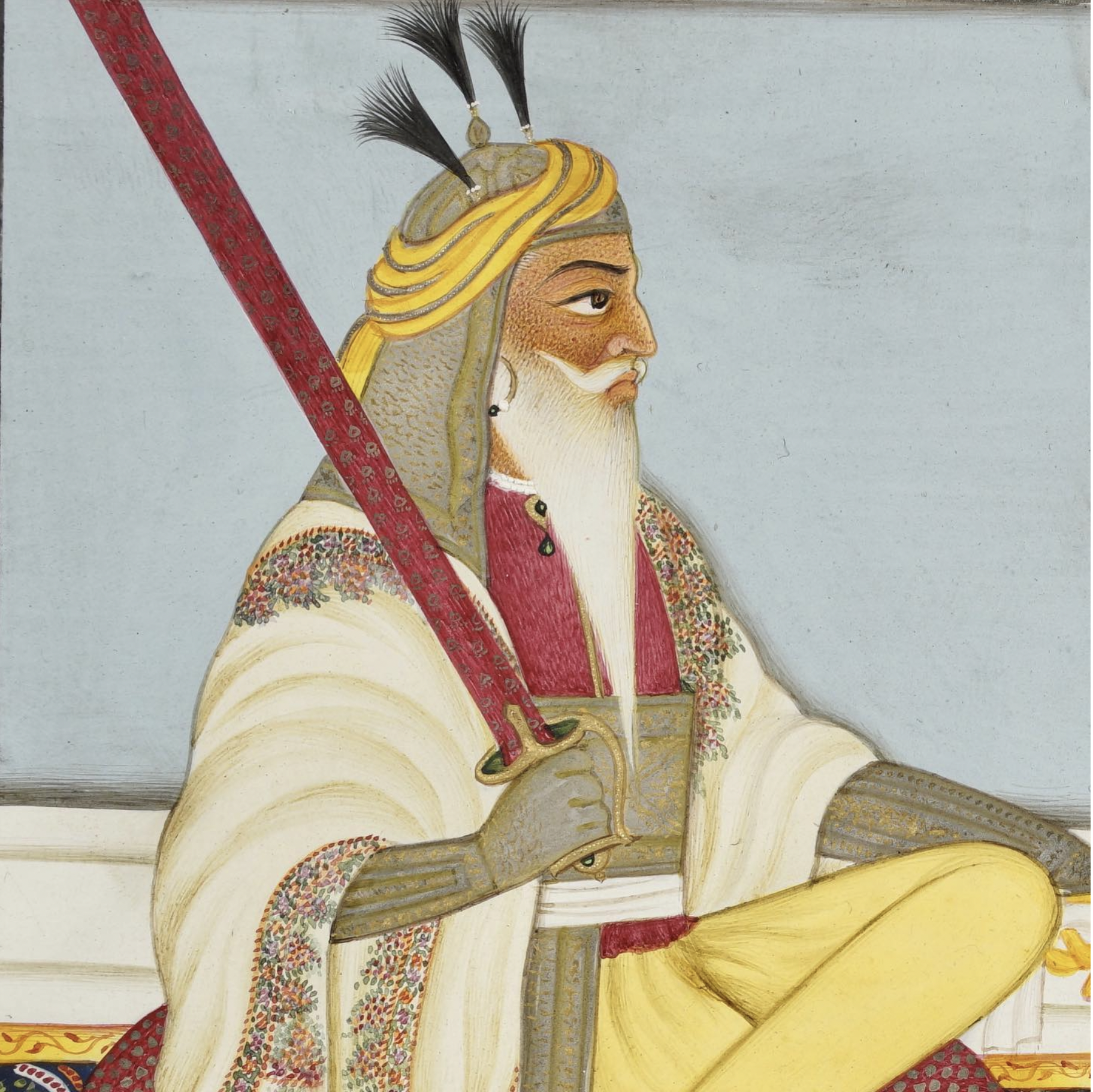The Hari Singh Nalwa Foundation Trust
Hari Singh Nalwa
(b.1791 d.1837)

Hari Singh Nalwa m Raj Kaur and Desan
Hari Singh Nalwa’s life is a saga of courage, strategy, and legacy. Born in 1791 in Gujranwala, Punjab, to Gurdas Singh and Dharam Kaur of the Uppal Khatri community, his life journey was shaped by adversity.
In 1798, when Hari was just seven, his father was killed in battle against the Afghan forces. Raised by his determined mother, Hari Singh quickly mastered Persian and Gurmukhi, alongside the martial arts of horsemanship and swordsmanship. His education went beyond books, forging him into a warrior at a young age.
By the age of ten, Hari Singh took Amrit and joined the Khalsa, the sacred order of Sikh warrior-saints. He was initially employed as a khidmatgar at Maharaja Ranjit Singh's Lahore Durbar and, thereafter, inducted into the Khalsaji, the Sikh army. His growth as a soldier was swift, and by age 14, he commanded 800 men in the Khalsaji. However, it was an act of extraordinary bravery that would cement his place in history. During a royal hunt, Hari Singh killed a tiger that attacked him. Maharaja Ranjit Singh, witnessing the feat, exclaimed, “Wah, mere Raja Nal, wah!” (Bravo, my Raja Nal, well done!), and thereafter, the name “Nalwa” was born, forever linked to his valour.
As commander-in-chief along the Afghan frontier, Hari Singh’s military genius was pivotal in expanding the Sikh Empire westwards to the mouth of the Khyber Pass, reclaiming territories lost to Ahmad Shah Abdali. These victories were not merely territorial but symbolic reclamation, restoring dignity to the people of Punjab, who had long suffered under Afghan rule. His campaigns became a defiant stand for Sikh sovereignty in a region dominated by foreign invaders.
Hari Singh’s name struck fear across the region. In his lifetime, the eighteenth-century Punjabi expression, “Khadha peeta lahe da, rahnda Ahmed Shahe da” (What we eat and drink is ours; the rest belongs to Ahmed Shah) transformed into the Pashto assertion, "Raghle Hari Singh" or ‘Hari Singh is here’ — the bogey called up by distraught Khalil and Mohmand mothers to quieten fractious children—a testament to the power and respect his name commanded.
Despite his fearsome reputation, Hari Singh was deeply devoted to his family. He married twice and fathered six children—four sons and two daughters. His bond with his sister, Kishundevi, was particularly close. The name of one of the strongest forts built by Hari Singh Nalwa, Harkishangarh in Haripur, Hazara, honours Guru Har Krishan and incorporates the name of the brother-sister duo.
Hari Singh’s legacy transcended the battlefield. He embodied the highest ideals of the Khalsa—a warrior, protector, and statesman. His leadership helped shape the Sikh Empire into a formidable force and ensured the survival of Sikh culture and identity. Hari Singh Nalwa’s life remains a beacon of vision, courage, and loyalty.
Today, Hari Singh Nalwa is remembered not only as a conqueror but as a cultural icon. His name symbolizes the Sikh spirit—unyielding, proud, and fiercely independent. His legacy continues to inspire those who value justice, bravery, and the pursuit of freedom.
